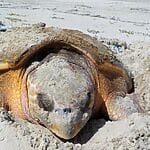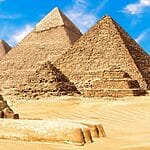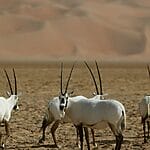10 Interesting Animals in Dominican Republic You May Not Know
Are you excited to know more about interesting animals in Dominican Republic?
You must know about Los Haitises National Park, which is a protected area located on the northeastern coast of the Dominican Republic.
This Los Haitises national park is home to a wide variety of wildlife and is known for its stunning variety of ecosystems. Wildlife animals that inhabit this national park include mammals, birds, reptiles, and amphibians.
Other most common mammals that are found in this national park include raccoons, Hispaniolan deer, and Hispaniolan monkeys.
The park is also home to a number of endemic bird species, including the Hispaniolan woodpecker, the Hispaniolan emerald, Humpback Whales, and the Ridgway’s hawk.
The wildlife in the Dominican Republic is like an exclusive window into the country’s rich biodiversity. a continent squished into half an island, including Lowland rainforests, cloud forests, pine forests, dry forests, mangroves, savannah, coastal lagoons, salt lakes, a rift valley, and more.
Let’s explore to learn about the 10 interesting animals in Dominican Republic.
Exploring Interesting Animals in Dominican Republic
Ready to Learn about the Interesting animals in Dominican Republic?
Nature never ceases to amaze us. I’ve always seen so many wild animals with distinctive features from one another. Today, in this guide, we will focus on land, water, and air animals found in the Dominican Republic.
I have divided these into four major categories.
- Native Dominican Animal Species
- Endangered Dominican Animals
- What Animal is the National Animal of the Dominican Republic?
- How many Animals are Native to the Dominican Republic?
Let’s learn about our first category of Native Dominican Animals.
10 Native Animals of the Dominican Republic
The Dominican Republic is a country in the central Caribbean Island, located on Hispaniola.
You will find interesting animals in Dominican Republic, including land mammals, birds, reptiles, and amphibians. Some of the most notable animals in the Dominican Republic include:
West Indian Manatee
Name: West Indian manatee
Scientific name: Trichechus manatus
Conservation status: Vulnerable
Interesting fact: West Indian manatees are gentle giants and one of the most interesting animals in the Dominican Republic that can grow up to 13 feet long and weigh up to 1,300 pounds. They are herbivores and their diet consists of seagrass, algae, and other aquatic plants.
Found: West Indian manatees are found in shallow, warm waters near the Caribbean Islands, the Gulf of Mexico, and the Atlantic Ocean. They are often seen in rivers, estuaries, national parks, and bays.
West Indian manatees are one of the most Interesting animals in the Dominican Republican and an important part of the marine ecosystem. They help to keep waterways clear of algae and other vegetation, and they provide food for other marine animals.
This marine species is also a popular tourist attraction and helps to generate revenue for local economies.
Hispaniolan Solenodon
Name: Hispaniolan solenodon
Scientific name: Solenodontidae
Conservation status: Endangered species
Interesting fact: The Hispaniolan solenodon is one of the Interesting animals in the Dominican Republican and a venomous mammal that is found only on the island of Hispaniola. It is the only venomous mammal in the Western Hemisphere.
Found: The Hispaniolan solenodon is found in forests and grasslands on the island of Hispaniola. It is nocturnal and its diet consists of insects, small mammals, and birds.
The Hispaniolan solenodon is an insect eating mammal that helps to control populations of insects and other small animals. It is also a prey item for larger animals, such as hawks and owls.
This species is threatened by habitat loss, hunting, and competition from introduced species. So, conservation efforts are required to protect this unique mammal from extinction.
Blue Whale
Name: Blue Whale
Scientific name: Balaenoptera musculus
Conservation status: Endangered Animals
Interesting fact: The blue whale is the one of the most interesting animals in Dominican Republic and largest animal on Earth, reaching up to 100 feet long and weighing up to 200 tons.
Found: Blue whales are found in all oceans except the Arctic and are considered critically endangered. They are filter feeders, meaning they eat small organisms by swimming with their mouths open and filtering the water through baleen plates.
Blue whales are an important part of the marine ecosystem. These amazing animals help to keep populations of krill in balance, which are a food source for many other marine animals.
Hispaniola Monkey
Name: Hispaniola monkey
Scientific name: Antillothrix bernensis
Conservation status: Extinct Species
Interesting fact: The Hispaniola monkey was a small, capuchin-sized monkey that was endemic to the island of Hispaniola. It went extinct around 500 years ago.
Found: The Hispaniola monkey is one of the most interesting animals in Dominican Republic, found in forests and woodlands on the island of Hispaniola. It was a frugivore, meaning its diet depended on fruits.
The Hispaniola monkey was an important part of the ecosystem on Hispaniola. It helped to disperse seeds and pollinate plants. It was also a prey item for larger animals, such as hawks and owls.
The Hispaniola monkey went extinct due to many factors, including habitat loss, hunting, and competition from introduced species. It is a reminder of the importance of protecting our natural habitat and the animals that live in them.
Small Indian Mongoose
Name: The Small Indian mongoose is amongst the diverse wildlife in the Dominican Republic.
Scientific name: Herpestes javanicus
Conservation status: Least Concern
Interesting fact: The Small Indian mongoose is a small, cat-sized mammal that is native to Asia. It is known for its ability to kill venomous snakes.
Found: The Small Indian mongoose is found in a variety of habitats, including forests, grasslands, and human-altered landscapes. It is an omnivore and its diet consists of insects, small mammals, birds, and snakes.
The Small Indian mongoose is an important part of the ecosystem. It helps to control populations of snakes, rodents, and other pests. It is also a popular pet and is used in some parts of the world to control snake populations.
The conservation status of the small Indian mongoose is the least concerned species. However, it is important to protect its habitat and prevent it from being over-hunted.
White-tailed Deer
Name: White-tailed deer
Scientific name: Odocoileus virginianus
Conservation status: Least Concern
Interesting fact: The White-tailed deer is the only mammal that is the most common deer species in North America. It is known for its white tail, which it flashes as a warning to predators.
Found: White-tailed deer are found in a variety of habitats, including forests, woodlands, and grasslands. They are herbivores and their diet consists of grasses, leaves, fruits, and nuts.
White-tailed deer are an important part of the ecosystem. They help to control populations of plants and other animals. They are also popular game animals and are hunted for their meat and antlers.
White-tailed deer are not currently threatened with extinction. However, they are vulnerable due to habitat loss, hunting, and disease. It is important to protect their habitat and manage their populations to ensure their long-term survival.
Blainville’s Beaked Whale
Name: Blainville’s beaked whale
Scientific name: Mesoplodon densirostris
Conservation status: Data Deficient
Interesting fact: Blainville’s beaked whales have a long, slender bodies and a distinctively arched lower jaw. They are found in all oceans except the Arctic and Antarctic.
Found: Blainville’s beaked whales are deep-water aquatic mammals, typically at depths of 1,000 to 2,000 meters. They are rarely seen by humans, but their calls have been recorded.
Blainville’s beaked whales are an important part of the marine ecosystem. They are predators of squid and fish, and they help to keep populations of these animals in balance. These whales are also preyed upon by larger whales, such as sperm whales and orcas.
Blainville’s beaked whales are not currently among the threatened species, but they are vulnerable to a number of threats, including habitat loss, ship strikes, and entanglement in fishing gear.
Hispaniolan greater funnel-eared Bat
Name: Hispaniolan greater funnel-eared bat
Scientific name: Natalus major
Conservation status: Near threatened
Interesting fact: The Hispaniolan greater funnel-eared bat has large, funnel-shaped ears that help it to locate prey in the dark.
Found: The Hispaniolan greater funnel-eared bat is found on the island of Hispaniola, which is shared by the Dominican Republic and Haiti. It roosts in caves and other dark places during the day, and emerges at night to fly and hunt for insects.
The Hispaniolan greater funnel-eared bat is an important part of the ecosystem on Hispaniola. They help to control populations of insects, which can damage crops and spread diseases. It is also a prey item for larger animals, such as hawks and owls.
The Hispaniolan greater funnel-eared bat is threatened by habitat loss, hunting, mining, and tourists damaging the cave ecosystem. It is important to protect this unique and interesting animal from extinction.
Raccoon
Name: Raccoon
Scientific name: Procyon lotor
Conservation status: Least Concern
Interesting fact: Raccoons are known for their “washing” behavior, where they dip their food in water before eating it. This is not actually washing but rather a way for them to feel their food with their sensitive paws.
Found: Raccoons are found in North America, Central America, and South America. They live in a variety of habitats, including forests, woodlands, and urban areas. They are omnivores and eat insects, small mammals, birds, fish, fruit, and vegetables.
Raccoons are one of the most interesting animals in Dominican Republic and an important part of the ecosystem. They help to control populations of insects, small mammals, and other pests. They are also popular game animals and are hunted for their fur and meat.
House Mouse
Name: House mouse
Scientific name: Mus musculus
Conservation status: Least Concern
Interesting fact: House mice are one of the most interesting animals in Dominican Republic. They are known for their ability to adapt to new environments and their high reproductive rate.
Found: Several species of House mice are found all over the world. They live in a variety of habitats, including homes, farms, and forests. They are omnivores and their diet consists of seeds, insects, and other small animals.
Endangered Dominican Animals
Animals go extinct due to a variety of reasons, including habitat loss, hunting, and climate change. When animals go extinct, it is saddening because it means that a unique part of the natural world is lost forever.
Extinct Animals
- Marcano’s solenodon
- Montane hutia
- Caribbean monk seal
- Imposter hutia
- Hispaniolan edible rat
Critically Endangered Animals
- Spiny giant frog
- Smalltooth sawfish
- Oceanic whitetip shark
- Hispaniolan crestless toad
- La Selle dusky frog
Endangered Animal
- Whitespotted eagle ray
- Cuvier’s hutia
- Caribbean reef shark
- Hispaniolan rhinoceros iguana
- Ricord’s rock iguana
Further Check out this complete list of Endangered Animal species in the Dominican Republic according to the International Union for Conservation of Nature’s Red List.
What Animal is the National Animal of the Dominican Republic?
There is no official national animal of the Dominican Republic, and there are 3 interesting animals in Dominican Republic that are often considered to be national animals. These animals are the Palmchat, the Hispaniolan Trogon, and the Hispaniolan Hutia.
- The Palmchat is a small, brown bird that is found in the Dominican Republic and Haiti. It is known for its beautiful song and its habit of nesting in large groups on royal palm trees.
- The Hispaniolan Trogon, a prominent part of the wildlife in the Dominican Republic is a brightly colored bird that is found in the Dominican Republic and Haiti. It is known for its long tail and its colorful plumage.
- The Hispaniolan hutia is a large rodent that is found in the Dominican Republic and Haiti. It is known for its burrowing habits and its nocturnal lifestyle.
How many Animals are Native to the Dominican Republic?
The Dominican Republic is home to a wide diversity of native animals, with over 1,700 species of Chordata (mammals, birds, fishes, and reptiles). This diversity is due to the country’s varied geography, which includes mountains, forests, beaches, and rivers.
Frequently Asked Questions
What animals are unique to the Dominican Republic?
The Hispaniolan solenodon, the rhinoceros iguana, and the Hispaniolan hutia are all unique to the Dominican Republic.
What is the Dominican Republic main animal?
The Palmchat is the national bird of the Dominican Republic.
What are 3 things the Dominican Republic is known for?
The Dominican Republic is known for its beautiful beaches, vibrant culture, and delicious food.
What are 3 interesting facts about the Dominican Republic?
Its 3 interesting facts include the first European permanent settlement in America, its flag with three colors, and precious stones.
- 15 Most Common Animals Living In Ponds - 2024-04-23
- What are the Characteristics Of a Wolf – (Characteristics & Interesting Facts) - 2024-04-23
- Animals That Live In The Abyssal Zone - 2024-04-22








